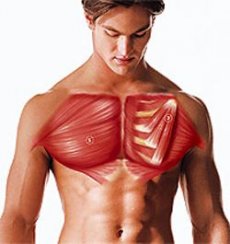Medical expert of the article
New publications
Branched-chain amino acids (BCAAs)
Last reviewed: 08.07.2025

All iLive content is medically reviewed or fact checked to ensure as much factual accuracy as possible.
We have strict sourcing guidelines and only link to reputable media sites, academic research institutions and, whenever possible, medically peer reviewed studies. Note that the numbers in parentheses ([1], [2], etc.) are clickable links to these studies.
If you feel that any of our content is inaccurate, out-of-date, or otherwise questionable, please select it and press Ctrl + Enter.

Main functions
- Prevent fatigue.
- Increases aerobic endurance.
Theoretical foundations
The CNS fatigue hypothesis suggests that increases in the neurotransmitter serotonin (5-hydroxytryptamine) during prolonged exercise contribute to fatigue and impair the ability to perform physical work. Increased serotonin synthesis occurs when increased amounts of tryptophan, a precursor to serotonin, enter the brain. Elevated levels of 5-hydroxytryptamine are associated with feelings of fatigue and sleepiness.
Tryptophan (TRP) is normally bound to serum albumin, while unbound, or free, tryptophan (f-TRP) moves across the blood-brain barrier. BCAAs compete with f-TRP and limit its entry into the brain. However, plasma f-TRP levels decrease during endurance exercise because they are oxidized in muscle for energy. The increase in free fatty acids during exercise also increases plasma f-TRP by displacing tryptophan from albumin. These high plasma f-TRP levels, combined with low f-TRP levels (high f-TRP/f-TRP ratio), increase brain serotonin and induce fatigue during prolonged endurance exercise.
Theoretically, BCAA supplementation would compete with plasma c-TRP to cross the blood-brain barrier, reducing the c-TRP/BCAA ratio and attenuating CNS fatigue. Carbohydrate supplementation may also reduce plasma c-TRP by suppressing the rise in free fatty acids that compete with tryptophan.
Research results
Madsen et al. studied the performance-enhancing effects of glucose, glucose plus BCAA, or placebo in nine well-trained cyclists participating in a 100-km race. To complete the race as quickly as possible, they took glucose, glucose plus BCAA, or placebo. Race times were the same in all cases.
Davis et al. evaluated the consumption of a 6% carbohydrate-electrolyte drink, a 12% carbohydrate-electrolyte drink, and placebo during a prolonged cycling test to fatigue at 70% V02max. When subjects consumed placebo, plasma s-TRP increased 7-fold. When subjects consumed a 6% or 12% carbohydrate-electrolyte drink, plasma s-TRP was greatly reduced and the onset of fatigue was delayed by approximately 1 h.
Recommendations
Although the use of BCAA as an ergogenic aid seems theoretically reasonable, the available scientific evidence is limited and questionable. Furthermore, the large amounts of BCAA required to produce physiological changes in the plasma c-TRF/BCAA ratio increase plasma ammonia, which may be toxic to the brain and impair muscle metabolism. Consuming large doses of BCAA during exercise may also slow intestinal water absorption and cause gastrointestinal upset.
Because BCAA supplements are not safe or effective, and because adequate amounts of these amino acids can be obtained from food, their use is not recommended at this time.
On the other hand, carbohydrate consumption is associated with a sharp decrease in the plasma c-TRF/ACRC ratio. It is impossible to determine whether the preferential carbohydrate consumption is due to the reduction in central fatigue in the brain or peripheral fatigue in the working muscles. However, unlike ACRC supplementation, carbohydrate nutrition can be recommended because its safety, impact on performance, and benefits have been well studied.


 [
[